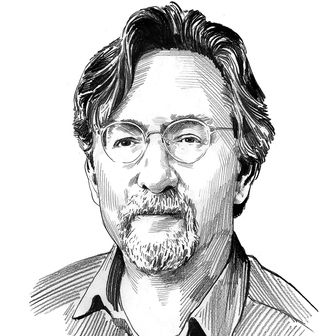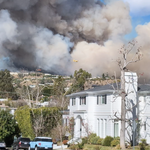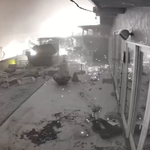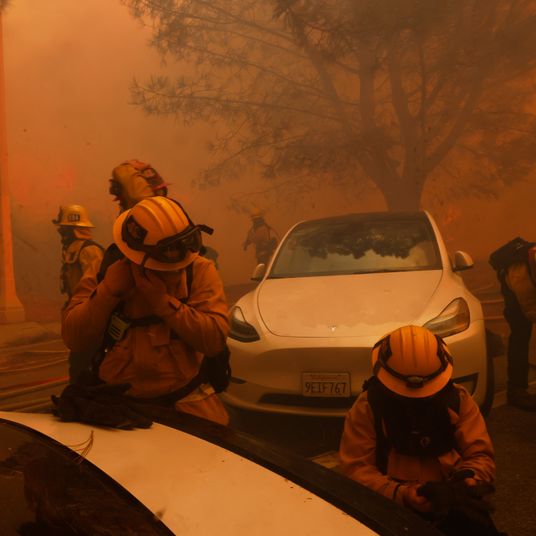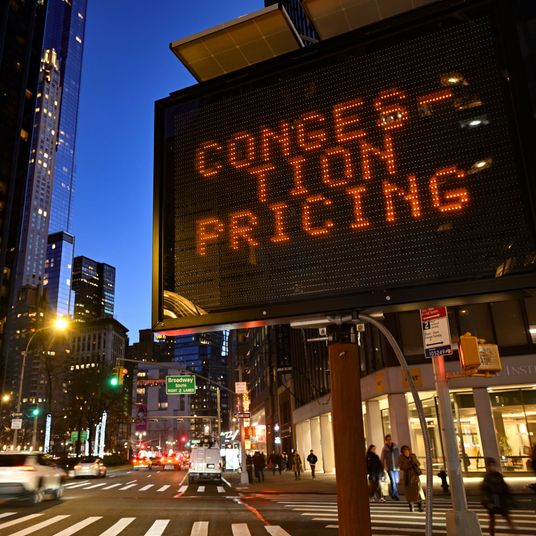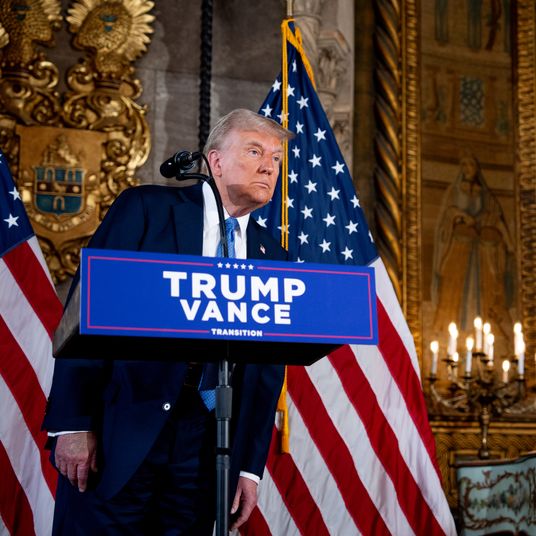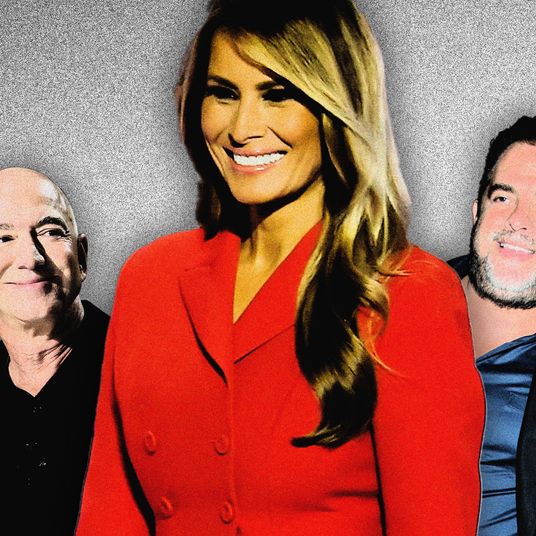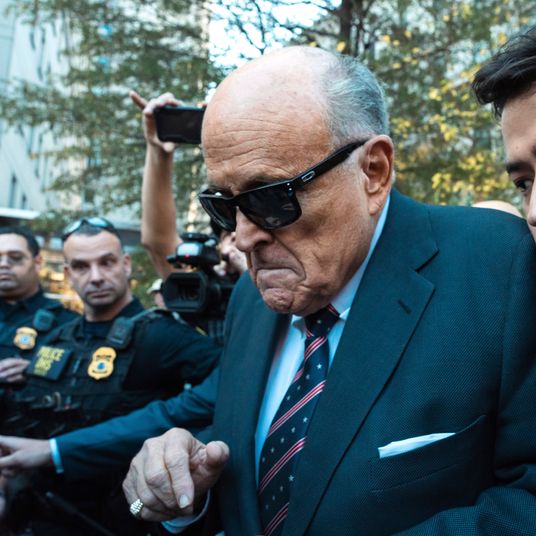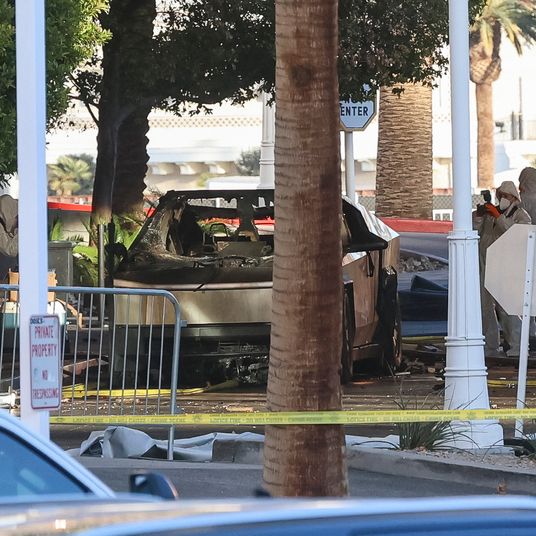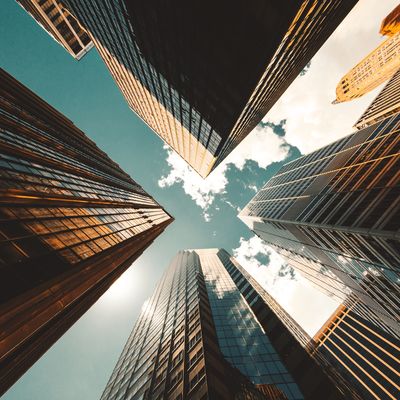
Last month, I passed through Tribeca, which was deathly quiet, its storefronts armored in plywood. Suddenly, a mirage appeared: a woman, coiffed and made up, wearing a skirt and high heels, strode down a deserted block, swinging a white handbag. She seemed like an alien who had dropped in on our world of stay-at-home schlumps, or maybe just a visitor from another year, a normal person highlighting just how abnormal our city had become. A few weeks later, New York is starting to feel like New York again, though fitfully, and still with a streak of the surreal. The racket has returned, with construction crews and traffic once more drowning out birds. A few streets are alive with sidewalk drinkers, although much of midtown still lies under its cone of silence. The woman with the handbag might blend in again.
It’s too soon for celebration, and the picture is too mixed for optimism. But at least, after months of eternal present, the future is coming into view: we can at last begin to look ahead, and not just with dread. New York is beginning to rethink many of its ossified assumptions. You can see it in the push to strip hundreds of millions of dollars from the NYPD, in the mayor’s executive order commandeering privately owned public spaces for the common good, in the short-order network of bike lanes and open streets, in the multiplication of dedicated busways, in the conversion of hotels to housing for the homeless. Governor Cuomo and Mayor De Blasio have wisely held off letting restaurants operate indoors, where diners are at the mercy of unreliable air-conditioning systems. If, come cooler weather, distrust of the great indoors persists and restaurants can’t lure customers back into their dining rooms, New York should invest heavily in heat lamps, emulating Northern Europe’s virtually year-round outdoor dining culture—not just in the brunchiest zip codes, but along, say, Dyckman Street or wherever New Yorkers eat.
Some of these measures are temporary or insufficient, but they suggest a willingness to draft in the wake of bolder cities. Paris has just reelected mayor Anne Hidalgo, who has made pedestrianizing and de-polluting her city so central to her campaign that she recently floated a proposal to turn its beltway, the much-loathed Périph, into a more leisurely, verdant, and crossable boulevard. New York should aspire to similarly transformative moves.
We tend to treat cities like the weather, using past patterns to predict outcomes over which we have no control. But the last few months have reminded us that cities are not givens, the status quo isn’t immovable, and citizens can force their elected officials to crash through bureaucracy and inertia. As New Yorkers emerge from a bitter spring and weeks of angry but hopeful protest, we can—must—recognize that after the fears of infection comes a point of inflection in the city’s history when its future is up for grabs. What will happen is what we make happen.
During the most heated days of the protests, I watched crowds march for a more equitable city, and worried that New York seemed suddenly, intensely fragile. A deadly shot, an out-of-control fire, a spate of destruction—any of these could have marked New York for a generation, and I wasn’t sure how great a body blow it could absorb before it began to conform to Trumpian fever dreams. My optimism about the city’s resilience ebbed by the minute. The crisis administered local and national governments all over the world a brutal series of tests, and the record is not good. They failed to contain the epidemic. While some East Asian cities managed to blunt its worst effects, New York couldn’t. Could the nation take necessary public health actions without bringing financial catastrophe on millions of households? Nope. Could we finally bring the contagion under control, or start opening up without triggering a new assault? Depends where you look. The cost of incompetence has been horrific.
Now New York’s leaders are confronting another round of challenges. The most immediate question is: Can we keep the city from entering a death spiral, where residents pull up stakes, revenues fall, the city becomes less appealing, causing more people to leave, and so on? The key to preserving New York’s magnetism is to restore its feeling of safety—from crime, from the cops, and from coronavirus.
Even before the pandemic, moving around New York was always a leap of faith. You had to trust that almost everyone in the swarms around you would behave with respect and a sense of cooperative sense of sharing. Urban living is a form of minute-by-minute collaboration. Conflict, cruelty, and violence are everyday occurrences, but they are also relatively rare. Every rush hour, millions of people brush past one other without incident, packing subway platforms without acting on an urge to shove, sharing elevators without fear of being stabbed, ordering at Shake Shack without worrying that the milkshake is poisoned.
Getting back to daily life means rebuilding that delicate web of trust. If I’m going to ride the subway, I have to assume that the man sitting next to me takes the same sorts of reasonable precautions I do. Before we can function normally, we must each be convinced that new habits and protocols are sensible, and that restaurants, employers, schools, and public agencies all scrupulously follow them. And then we have to make a greater leap, and learn to trust governments that have let us down.
Change is risky, but business as usual is Russian roulette: keep at it long enough, and death is sure to follow. An $8 billion crevasse has opened in the budget of the MTA, leading the agency to halt all work on its five-year capital plan. Not enough people are riding the subway, so we have no money; do we really want to let the system go to hell so that nobody wants to ride the subway ever again? Those who can drive will, causing gridlock that makes East Midtown during the United Nations General Assembly seem like a desert highway. The more commuters rely on their cars, the more they will fight any attempt to claw some pavement back for restaurant tables, bike paths, pedestrian plazas, and bus lanes. SUVs will spread like bishop’s weed, smog will refill the air, and professionals will jump at the chance to stay in the suburbs and work remotely.
In the past 20 years, as the number of tourists and New Yorkers has continued to grow along with the economy, there were those who felt that the city city was being swamped. Yet we can’t let this become a place where only the hardy and hopeless choose to stay. I’m less worried about spooked residents’ fleeing—that’s a fine New York tradition—than about potential newcomers’ being unable to arrive. For now, the gates remain closed: immigration has all but stopped, flights from abroad are scarce, and Cuomo has made it clear that visitors and returnees from Florida, Texas, and other virus-stricken states are welcome only if they commit to quarantine. The prolonged freeze will deepen the city’s wounds. “I’ve seen other external shocks to our industry,” says Vijay Dandapani, head of the Hotel Association of New York City. “After 9/11 and the Great Recession, it took a year and a half for revenue growth to happen. But in both those cases, occupancy never dropped below 60 percent. Now, there’s no pulse.” (During the pandemic, it has dipped as low as 16 percent.) Dandapani says he figures it will be five years before the tourism industry begins to resemble 2019 again.
Impromptu decisions can have long-term implications if we pay attention: Treat those who cry for justice as an enemy horde and you will divide your city further; treat them as teachers and you can heal. In Aurora, Colorado, a protest to commemorate the death of Elijah McClain summoned violinists for “an improvised harmonization,” which wound up so alarming the police that they tried to break up the concert with riot gear. Even so, the electric fiddler Jeff Hughes jumped on a truck and kept the music going. String-instrument actions are going national: another took place a few days later in Washington Square, and it was not treated as a security threat.
After months of communing with our devices, we badly need live music. Traditional venues will stay dark for the rest of the year, but in the meantime, the city might breathe life into New York’s musical life by seeding it outdoors. The Department of Cultural Affairs should team up with cultural heavy hitters like Lincoln Center, plus Make Music New York, an organization that mounts a twice-annual solstice celebration with more than a thousand concerts, large and small, all across the city. One of my indelible musical memories is from a decade ago, when I drifted in a rowboat out onto the lake in Central Park and listening to Iannis Xenakis’s Persephassa as it was performed by percussionists ranged along the shore. The year before, Bang on a Can launched an avant-garde marching band, Asphalt Orchestra, that could be revived as a rapid-deployment morale booster, popping up around New York for half an hour of joyful mayhem. Pop-up concerts, chamber music flash mobs, socially distanced dance parties, and parking lot recitals can be quick, small, cheap, and safe. They would go a long way to bringing some joy back to New York’s streets and keep the death spiral at bay.
As we navigate these next fluid months, we should be thinking about another question that will test New York’s character: Can we learn the right lessons from our overlapping crises—disease, discrimination, and threats to democracy—and put them into action, even after the immediate sense of emergency has passed? Passing that test means baking principles of equity into the zoning code and development plans, intensifying the fight to control pollution and climate change, rethinking the way New Yorkers move around the city, and reopening the spigots that bring in immigrants, visitors, and workers from other states to refresh the city’s economy.
Even as the city pares its budget and prunes its payroll, we can’t just hunker down and hope for the best. We need to intensify our ambitions for the developments and public projects that will define the next iteration of New York. We still need Gateway or its equivalent (the new passenger-rail tunnel beneath the Hudson), a transformed Penn Station, a new Port Authority, and a less noxious version of the BQE. (Yes, tax revenue has tanked and federal funding may have to wait for a changing of the guard in Washington, but there’s plenty of planning to do in the meantime.) Sunnyside Yard still holds promise as an anti-Hudson Yards. The areas of Long Island City that Amazon walked away from in 2018 can still benefit from large-scale development. “I’m bullish on Queens,” says MaryAnne Gilmartin, one of the developers involved in a mixed-use project next to the ex–-Amazon site. “The problem is to get people to stop reacting and think ahead. Even though the [city’s] Economic Development Corporation is hard-wired to think about the future, right now they’re mired in the present.”
A crisis is a challenge to our notion of impossibility. It inflicts on us circumstances we thought fantastical, and reminds us that distant threats quickly become real. Climate change will be like that. But it also teaches us not to despair. What we thought was impossible is doable. During the pandemic, we moved our social, work, and cultural lives online. We survived without planning ahead. And through it all, we preserved our indignation, our moral instincts and our sense of shame. We emerged ready to ask not just What’s gonna happen next? but: How do we get to the city we want to live in?


